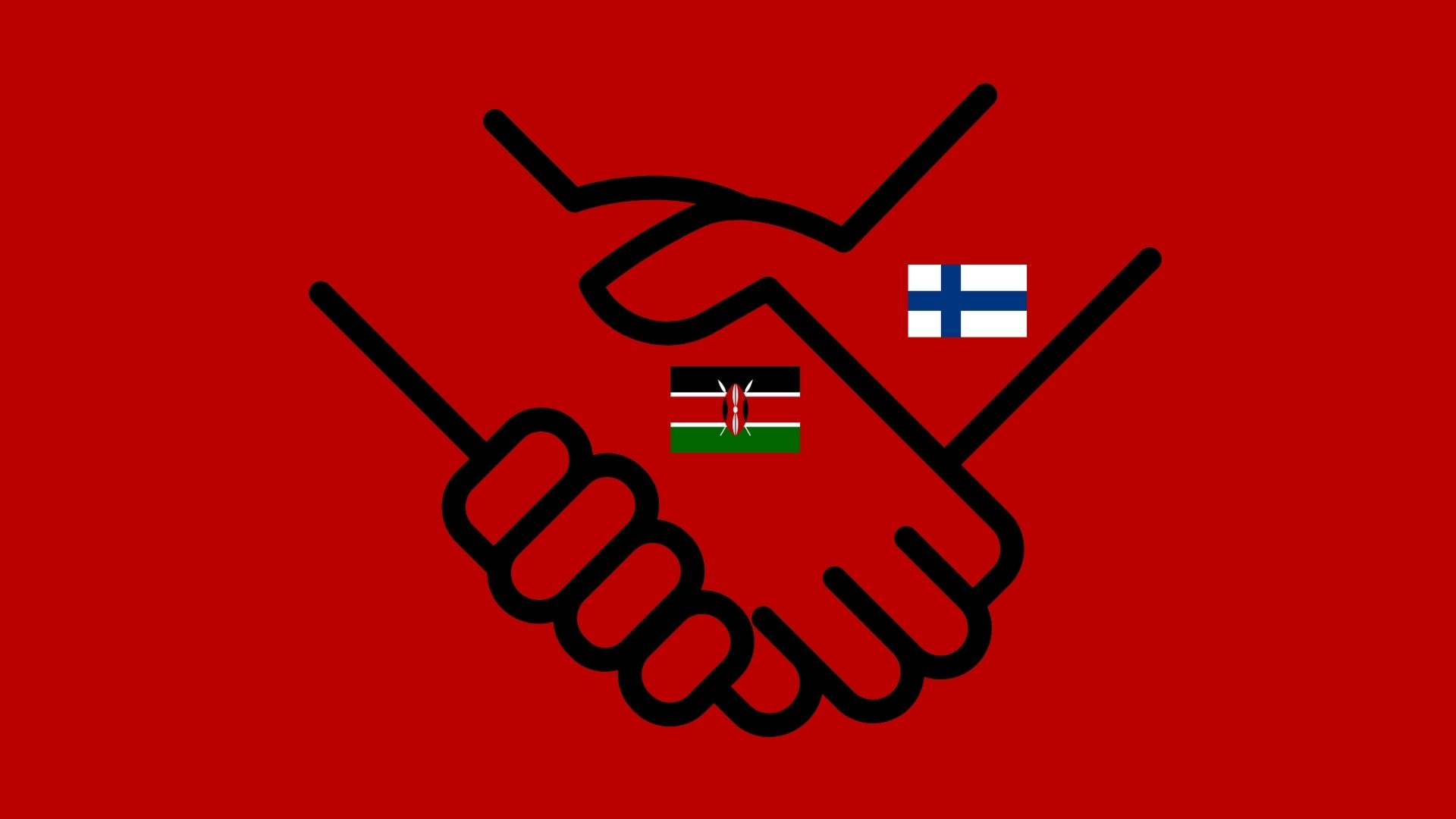That Finland has a mulembe soul is evident in the longstanding cooperation between Finnish people and communities in Western Kenya. From water provision to sanitation and tertiary education, its a relationship that has grown both in geographical scope and in areas of interest. What is less known is the ethos for peace – the spirit of mulembe – shared between these two peoples whose worlds couldn’t be more far removed from each other. It is this unlikely bond that’s a more than half a century old that is now now threatened by the war in Ukraine.
If it happens that you are bullied, attacked or hit other alliance members will come to your defense. That’s the bro code. That’s the promise to eligible nations that chose to signs up and become NATO members. It therefore is an attractive, if not the only logical decision, for a nation like Finland to want to be part of such an Alliance with the war raging in its neighborhood.
Finland shares a long border with Russia, some 1,340 km (830 miles) long that runs roughly north–south. Over the years, through wars, the international boundary between the Republic of Finland and the Russian Federation has shifted. It is the memory of this history, in the face of the war in Ukraine, that has convinced Finnish people to urge their representatives to drop, for the first time in almost a century, their national stance of military non alignment. Finland adopted neutrality following a bitter defeat by the Soviet Union during World War Two.
Bindu Bichenjanga
But as we say in Luhya, bindu bichenjanga. According to several Western Media outlets, from a low of around 20-25% Finn public support to end military non alignment by joining NATO has shot up to a record high of 76%, since Russia invasion of Ukraine. From where they sit, Kremlin considers this Finn decision a threat. It is a significant redraw (See Twitter thread for more context) of cultural, trade, security, geopolitical and in effect, international borders.
During the Cold War, Finland’s eastern border was on the northern fringes of the Iron Curtain across Europe, and the closeness of the border aroused both fear and awe. Entering and crossing the border was only possible in special cases and only after lengthy bureaucratic processes. The border was heavily fortified and guarded and there were no contacts between people living on the two sides even though the distance between them was only a few kilometers. In those days Finland’s eastern border also signified the widest prosperity gap in the world and the decisions on trade between the two neighbors were made at government level.
Korpela, S. (2008, June). A border that once divided now unites. thisisFINLAND. Retrieved May 13, 2022, from https://finland.fi/life-society/a-border-that-once-divided-now-unites/
Beyond that, the Finn decision – which we’d like to reiterate is their decision, and thus should be what’s best for them – has an effect on another connection that defied borders between people: The Finnish – Mulembe connection.
The Finland – Mulembe Connection is beyond lipeäkala and shibambala
The Finland Mulembe story is an idea that goes beyond what two governments may decide among themselves. While it might have started off entirely accidental, though it is more likely a deliberate geopolitical move (I promise to look into how it all started – another day, another story), but the cultural similarities between these two peoples who couldn’t be more different is startling!
Take the typical Nordic Christmas fish dish, lipeäkala, made by soaking dried cod for several days in lye – a solution made with caustic soda or potassium hydroxide. I mean, this dish only gives me ideas on how to reimagine a similar Luhya traditional fish dish known as shibambala / kivaramba / obambala. Shibambala is also a dried fish dish, and is heavenly only as it is cooked in a traditional lye that we the people of mulembe call munyu mushelekha.
Some of the earliest reports of Finn – Mulembe cooperation appear in the sixties, no less in the Hansard of Kenya’s first parliament. Quick back of the hand calculations tells us that by this time, the Finns had been people of mulembe (peace), for some odd three decades, having adopted the principle of military non alignment in 1937. Ask any one of us people of mulembe and we will tell you unequivocally that souls full of the spirit of mulembe know each other. Its the reason why the Quakers found a home among us. It is why the Finns came, saw and left us with Kefinco (Kenya Finland Cooperation), and nothing less than Masinde Muliro University.
Editor’s note
This Twitter thread by Minna Ålander a research assistant at SWP Europe – Research Division EU/Europe, German Institute for International & Security Affairs – offers valuable insights on the determination by the Finns to join NATO.
Since many people know nothing about Finland, jump on click bait headlines and retweet without checking facts, here a short overview of the things Russia has threatened Finland with so far & what their consequences are/would be:
— Minna Ålander ? (@minna_alander) May 14, 2022
Subscribe to Mulembe Weekly
Get culture, language, stories and discussions in your inbox every Friday 5 PM East Africa Time

